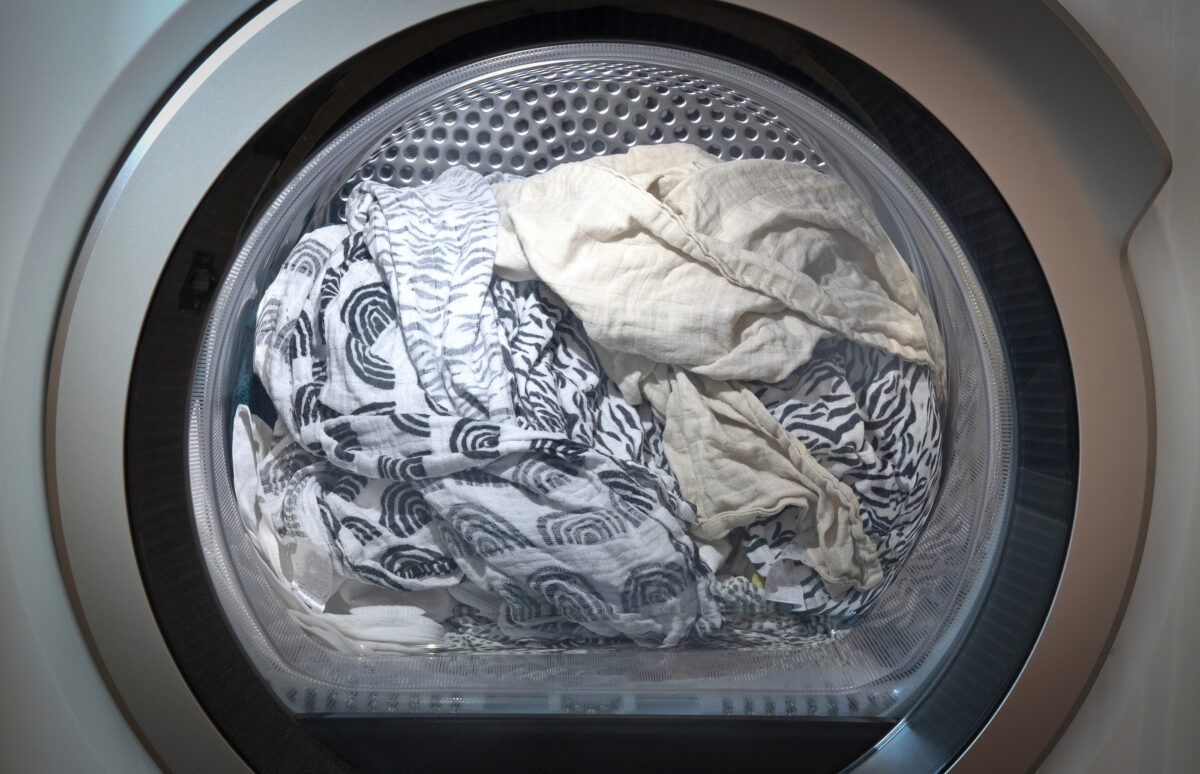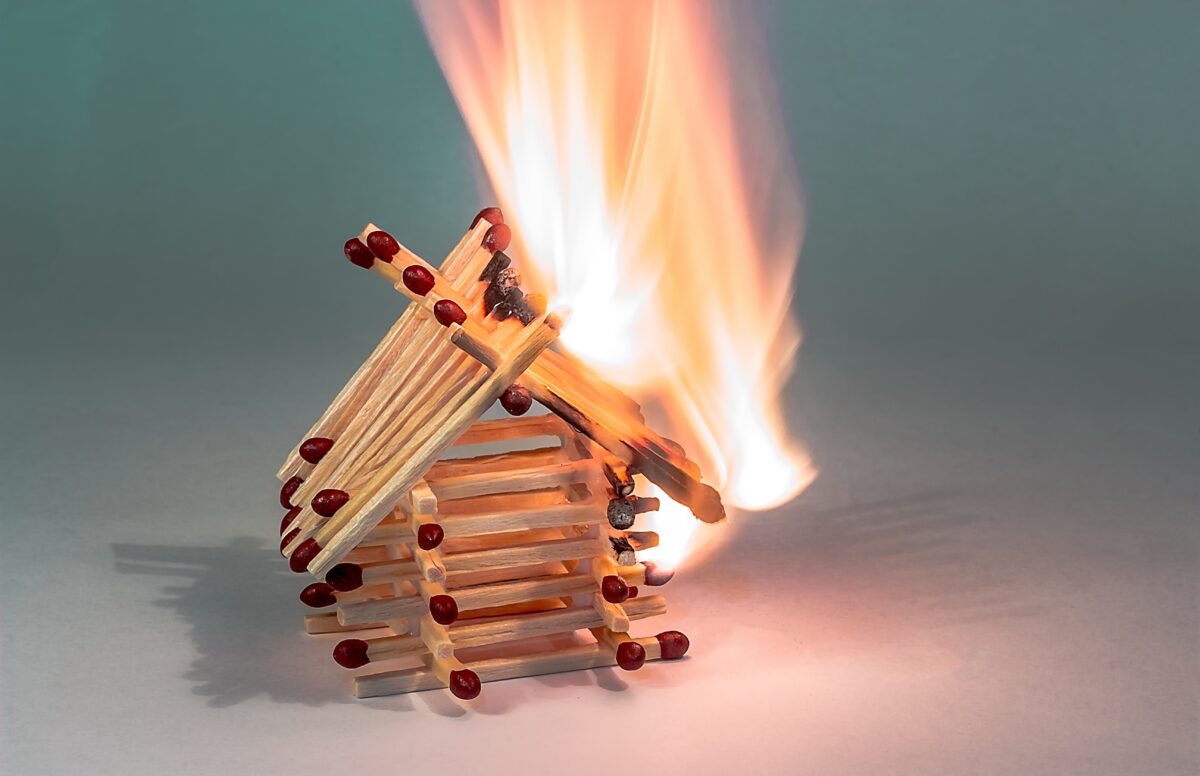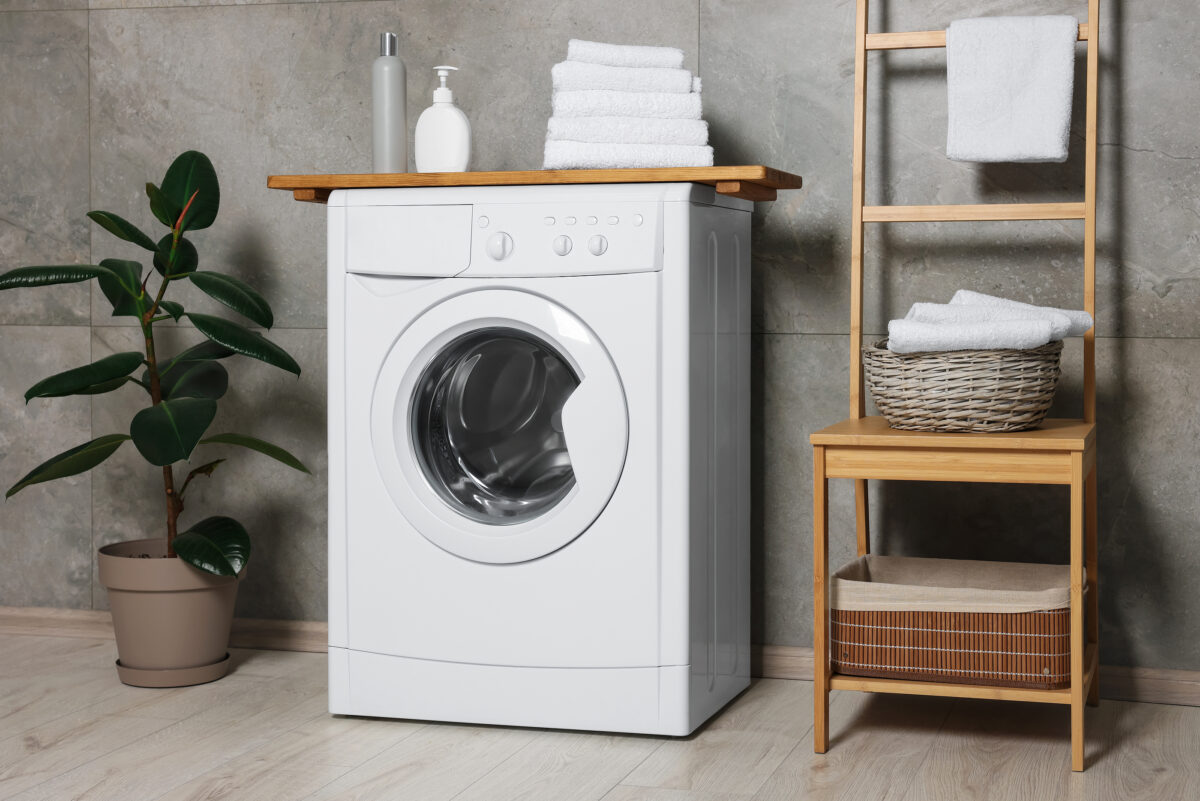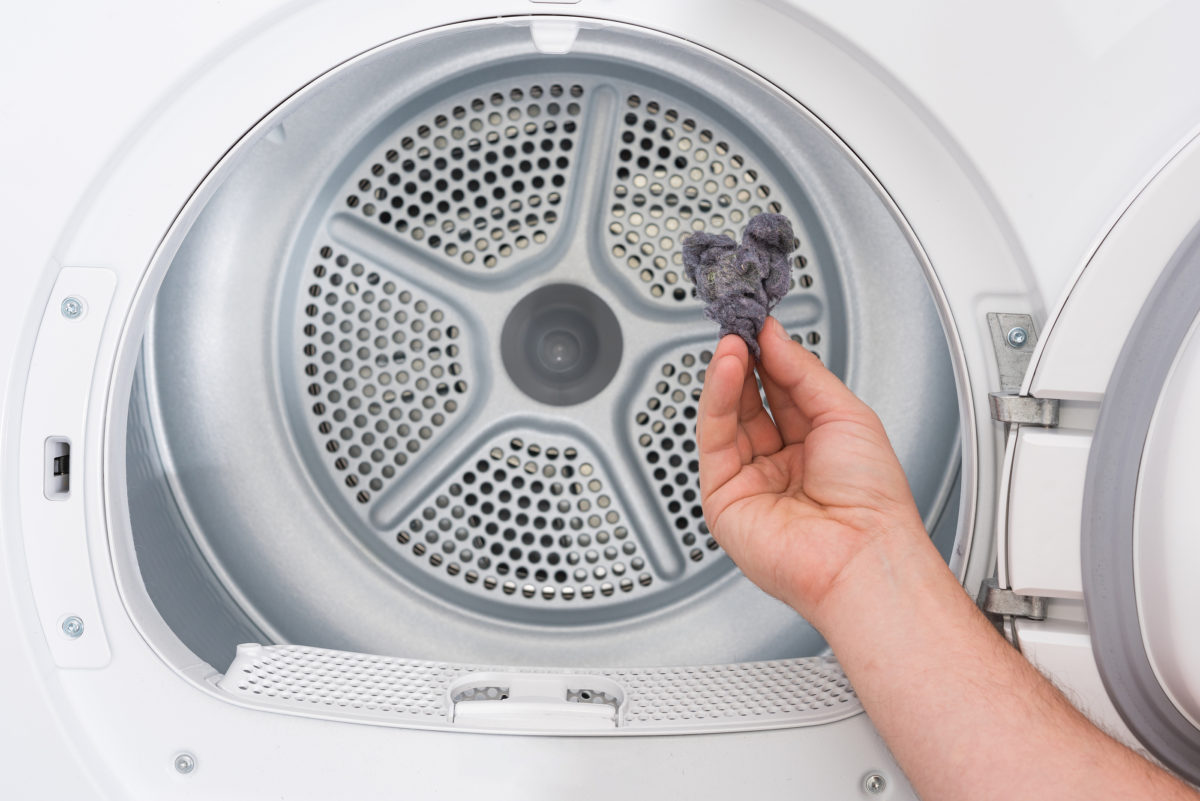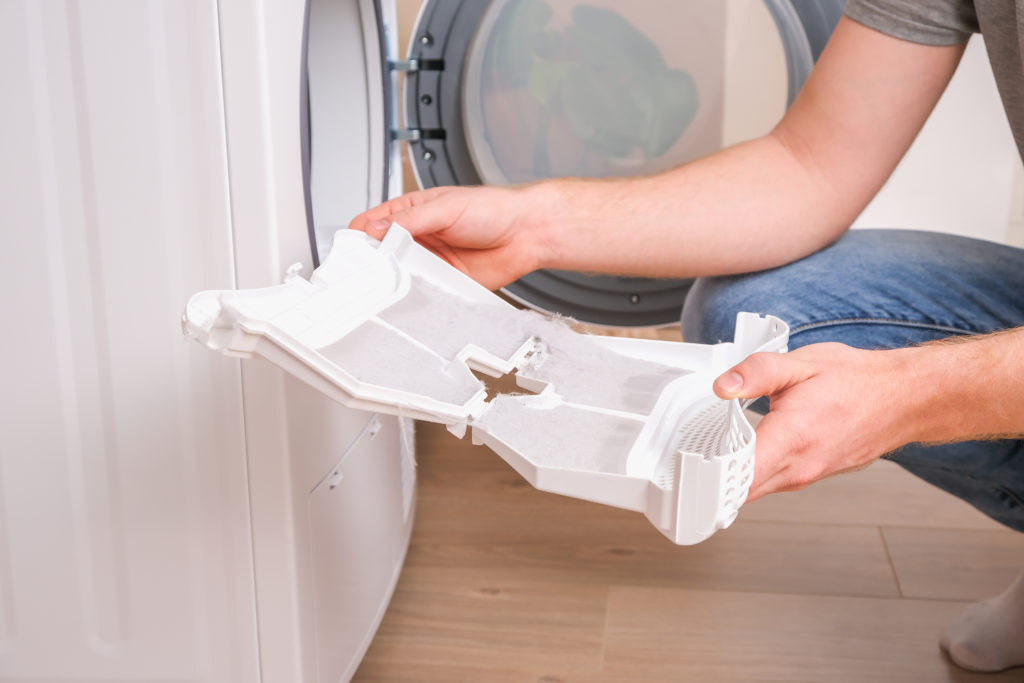Spring cleaning isn’t just about dusting cobwebs and decluttering closets. It’s a crucial time for home maintenance, ensuring your haven remains safe and efficient throughout the year. As you tackle your spring cleaning to-do list this year, consider focusing on three often-overlooked areas: fireplaces, wood stoves, and dryer vents.
Spring cleaning fireplaces is essential to remove ash buildup and soot, which can hinder performance and even pose a fire hazard. The same goes for wood stoves. Dryer vents clogged with lint and debris can reduce drying efficiency and become a fire risk.
This comprehensive guide provides valuable insights and practical tips to address these crucial maintenance tasks, ultimately fostering a safer, more comfortable home environment.
Fireplaces – Keeping the Hearth Healthy
The Importance of Annual Fireplace Inspection and Cleaning
Incorporating spring cleaning fireplaces into your annual maintenance routine is not merely good practice; it’s vital for the safety and efficiency of your home.
Regular maintenance helps prevent chimney fires, carbon monoxide poisoning, and can improve the overall efficiency of your fireplace. After a season of use, fireplaces can accumulate creosote, a highly flammable substance formed from burning wood, along with soot and other debris that can obstruct airflow and pose significant fire hazards.
Identifying Common Issues with Fireplaces After Winter Use
After the cold months have passed, it’s common to find a variety of issues with your fireplace and chimney:
- Soot Buildup: A fine black powder that coats the interior surfaces of your fireplace and chimney, reducing efficiency and air quality.
- Creosote Accumulation: A tar-like substance that is a byproduct of burning wood. It’s highly combustible and a common cause of chimney fires.
- Blockages: Birds’ nests, leaves, and other debris can block your chimney, posing a serious fire risk and preventing proper ventilation.
- Potential Damage: Winter use can lead to cracks in the chimney liner, loose bricks, or deteriorated mortar.
Step-by-Step Guide on Basic Fireplace Cleaning Homeowners Can Do
- Wait 24 Hours: Ensure your fireplace has cooled down for at least 24 hours since its last use.
- Preparation: Lay down a tarp or old newspapers in front of the fireplace to catch debris. Wear a dust mask and gloves for protection.
- Remove Ashes: Carefully scoop out the ashes with a metal shovel and place them in a metal bucket. Dispose of ashes safely, keeping them away from combustible materials.
- Cleaning the Interior: Use a fireplace brush or a hand broom to scrub the interior walls of the fireplace. A mixture of water and baking soda can help remove soot.
- Clean the Grate: Remove the grate and brush it down to remove soot and ash.
When to Call in a Professional Chimney Sweep for a Thorough Inspection and Cleaning
While DIY spring cleaning fireplaces can remove superficial debris, a professional chimney sweep is necessary for a comprehensive inspection and cleaning.
Call a professional if you notice:
- An unusual odor coming from the fireplace.
- Visible creosote buildup beyond what can be safely removed through DIY methods.
- Any signs of damage or wear and tear.
- It’s been more than a year since the last professional inspection.
Professional sweeps have the tools and expertise to safely remove hazardous buildup, check for structural issues, and ensure your chimney complies with safety standards.
Tips for Maintaining a Clean and Efficient Fireplace Until the Next Season
- Burn Seasoned Wood: Using well-dried, seasoned wood minimizes creosote buildup and ensures a cleaner burn.
- Use a Chimney Cap: To prevent debris and animals from entering your chimney.
- Monitor Fire-Burning Practices: Avoid overloading the fireplace and ensure proper ventilation to minimize soot and creosote accumulation.
- Regular Checks: Periodically check for signs of obstruction or unusual smells, especially after heavy storms or periods of disuse.
By adhering to these guidelines, you can enjoy the warmth and ambiance of your fireplace safely and efficiently, ensuring it remains a cherished part of your home for years to come.
Wood Stoves – Ensuring Efficiency and Safety
Wood stoves provide a cozy, efficient way to heat your home during the cold months. As we transition into spring, it’s crucial to maintain your wood stove to ensure it remains efficient and safe for the next heating season. Spring maintenance is not just about cleaning; it’s about ensuring the longevity and performance of your wood stove.
Common Problems Faced by Wood Stove Users
Wood stove users often encounter several issues that can impact the efficiency and safety of their stoves:
- Creosote Buildup: A common byproduct of wood burning, creosote is a tar-like substance that can accumulate in the stovepipe and chimney, posing a serious fire hazard.
- Air Flow Issues: Improper air flow can lead to inefficient burning, resulting in excess smoke and reduced heat output.
- Wear and Tear: Regular use can cause wear and tear on stove parts, including the door gasket, which may lead to air leaks.
DIY Maintenance Tips for Wood Stove Owners
- Inspect and Clean the Stovepipe and Chimney: Use a chimney brush to remove soot and creosote buildup from the stovepipe. If you’re comfortable working on the roof, you can also check the chimney, but this is often best left to professionals.
- Check the Door Gasket: Ensure the door seals tightly. If you can see gaps or feel air leaking, it may be time to replace the gasket.
- Clean the Interior: Remove ashes and debris from the stove’s interior. A vacuum designed for ash removal can be very helpful for this task.
- Inspect for Wear and Tear: Check for any signs of wear or damage to the stove and its components. Pay special attention to the firebricks inside the stove; if they’re cracked or damaged, they’ll need to be replaced.
The Importance of Professional Inspections
While DIY maintenance is important, a professional inspection is critical for ensuring the safety and efficiency of your wood stove.
A certified professional can:
- Thoroughly inspect the chimney and stovepipe for creosote buildup, blockages, or structural issues.
- Assess the overall condition of the stove and its installation, including the adequacy of ventilation and the integrity of the chimney connections.
- Provide expert advice on any needed repairs or adjustments to ensure your stove is operating safely and efficiently.
Preparing Your Wood Stove for the Off-Season
- Thorough Cleaning: After your final use for the season, give your wood stove a thorough cleaning, following the DIY maintenance tips provided.
- Leave the Damper Open: To allow air circulation and prevent moisture buildup, leave the damper slightly open.
- Protect Against Rust: To prevent rust, consider applying a light layer of stove oil to the interior surfaces.
By dedicating time to the maintenance of your wood stove in the spring, you can address any issues before they become serious problems, ensuring your stove remains a safe, efficient source of warmth for many years to come.
The Critical Need for Dryer Vent Cleaning
In the routine of home maintenance, dryer vent cleaning might not top the list of priorities, but its importance cannot be overstated. Dryer vents are an essential part of your home’s ecosystem, playing a critical role in the safety and efficiency of your laundry system. Neglecting them can lead to dire consequences.
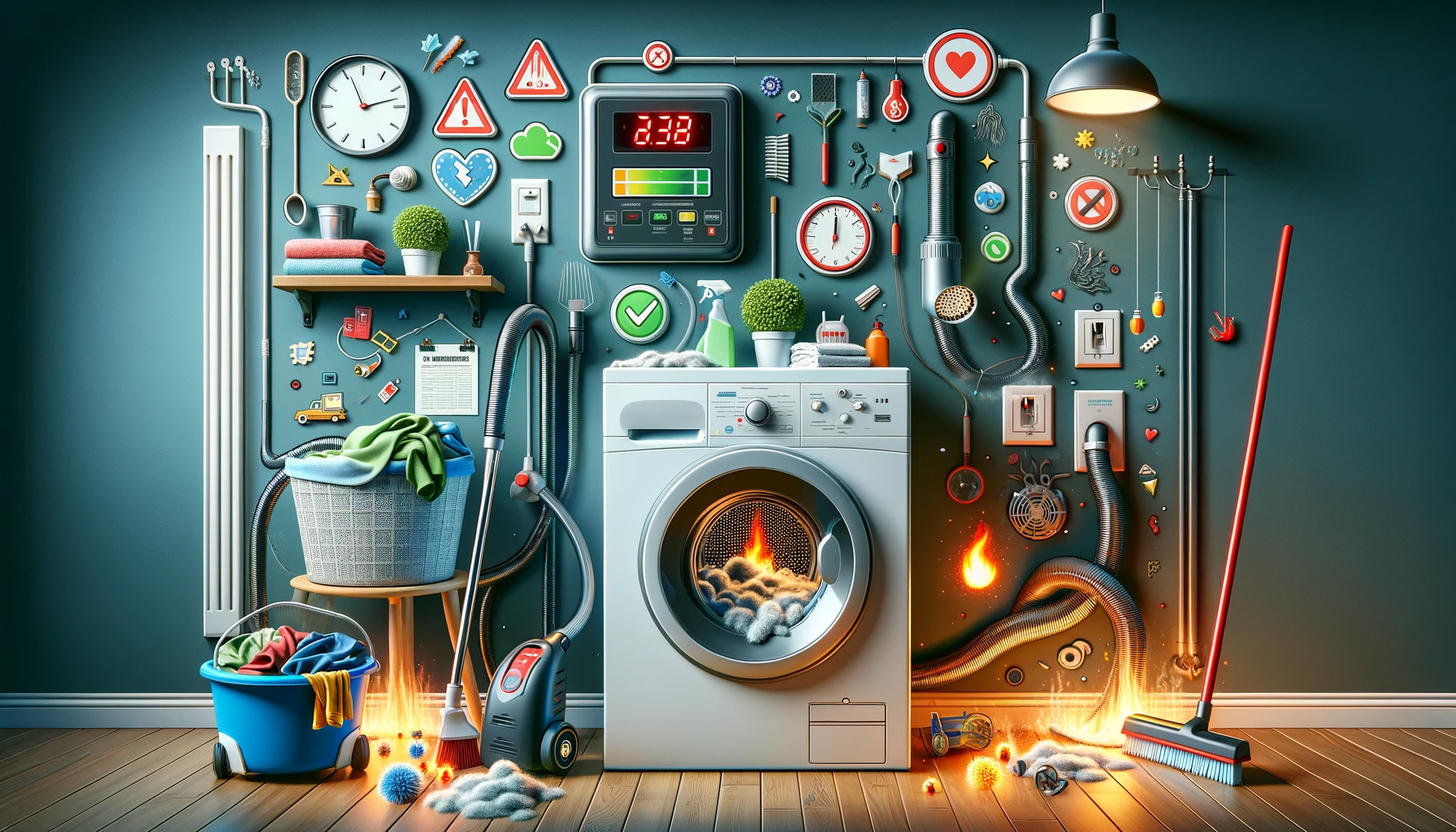
The Often-Overlooked Importance of Dryer Vent Cleaning
Dryer vents carry away hot, moist air generated during the drying process. When lint and debris accumulate in these vents, they can obstruct airflow, strain your dryer, and create a significant fire hazard. Surprisingly, thousands of home fires each year are attributed to dryer vents clogged with lint.
The Dangers of Lint Buildup
- Reduced Efficiency: Clogged vents mean your dryer works harder and longer to dry clothes, significantly increasing energy costs and wear on the machine.
- Fire Hazards: Lint is highly flammable. Combined with dryers’ high temperatures, significant lint buildup can lead to fires that can quickly engulf a home.
Instructions for Homeowners on How to Clean Lint from Accessible Parts of the Vent
- Unplug the Dryer: For safety, always unplug the dryer before starting any maintenance work.
- Clean the Lint Trap: Before and after each load, remove and clean the lint trap thoroughly.
- Check the Venting System: Detach the duct from the back of the dryer and use a vacuum to remove lint from the duct and the area where it connects to the dryer. If accessible, also clean the external vent.
- Use a Vent Brush Kit: These kits can help you reach lint further along the vent duct. Carefully insert the brush and gently scrub the sides of the duct, pulling out the lint.
The Benefits of Professional Dryer Vent Cleaning Services
While DIY cleaning is beneficial for routine maintenance, professional cleaning services offer deeper, more thorough cleaning. Professionals have the tools and expertise to:
- Efficiently remove lint, debris, and blockages from the entire vent system, including difficult parts for homeowners to reach.
- Inspect the vent system for any signs of damage or wear that could affect its performance and safety.
- Recommend optimal venting solutions, ensuring your system operates safely and efficiently.
Preventative Measures to Minimize Lint Buildup and Ensure Dryer Efficiency
- Regular Cleaning: Make lint removal from the trap and vent a regular part of your laundry routine.
- Monitor Dryer Performance: If clothes take longer to dry or the dryer is running hotter than usual, it may be a sign of vent blockages.
- Consider Metal Ductwork: If possible, use smooth metal ductwork for your venting system. It’s less prone to lint buildup and more fire-resistant than plastic or foil ducts.
By understanding the critical importance of dryer vent maintenance, homeowners can take proactive steps to mitigate risks and ensure their homes remain safe, efficient, and hazard-free.
As we’ve explored, integrating the care of fireplaces, wood stoves, and dryer vents into your spring cleaning regimen is not just about tidiness; it’s about safeguarding the well-being of your home and loved ones. The accumulation of soot, creosote, and lint poses not only a fire hazard but also diminishes the efficiency of your heating and drying systems. This is where the expertise of professional chimney sweeps and dryer vent cleaners becomes invaluable.
Regular professional inspections and cleanings are imperative to prevent potential hazards and maintain optimal performance of your appliances. As we bid farewell to the cold and welcome the warmth of spring, now is the perfect time to ensure your home is prepared for the year ahead.
Contact The Irish Sweep for your Spring Cleaning Fireplaces Needs
Don’t wait! Contact the Irish Sweep today for a comprehensive inspection and cleaning of your fireplace, wood stove, and dryer vents as part of your spring cleaning fireplaces efforts. Let our team of experts provide you with peace of mind knowing your home is in safe, capable hands.
To schedule an appointment or learn more about our services, reach out to us at 510-521-4088. Ensure your home’s safety and efficiency for the upcoming year—call now!


